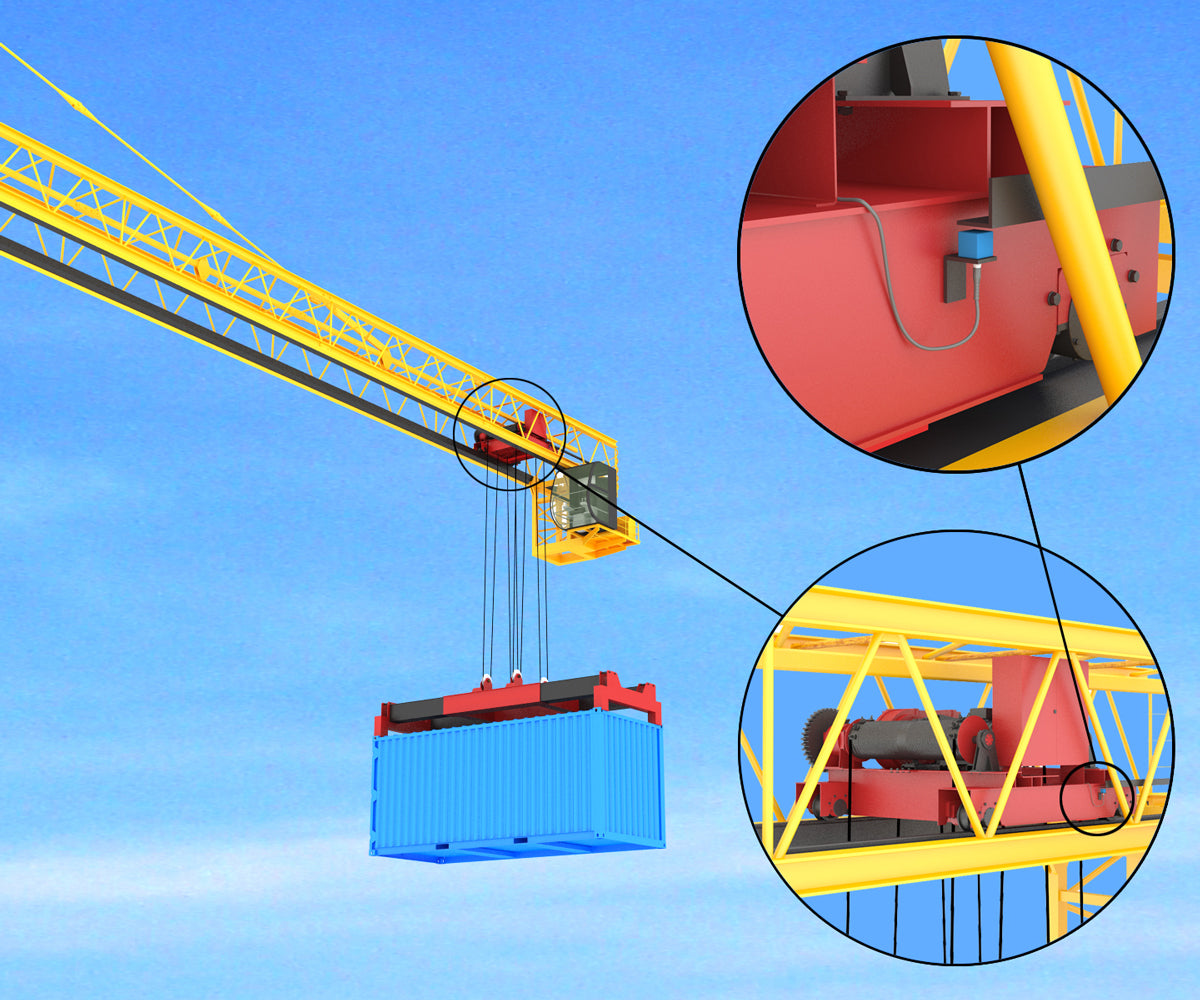Summary
Container-handling cranes in busy British seaports operate around the clock. Sensors on each hoist carriage detect its position with respect to the crane structure and prevent it travelling outside preset limits. Mechanical play in the hoist carriage allows a small amount of lateral drift as it travels along the crane structure; adequate sensing distance is essential to prevent the sensor colliding with the crane structure.
Customer Values
- Reliable sensing of hoist-carriage position in a busy container seaport
- Significant reduction in crane downtime
- Marked decrease in maintenance costs for replacement sensors
Specific Product Advantages
- Sensing distances up to 20mm in industry-standard 40 x 40mm housing
Customer Application
Loading and unloading containers in a busy British seaport is a 24-hour activity, all year round; optimum utilization of storage space is essential to achieve maximum operating efficiency. Container-handling cranes operate above the storage area, positioning containers before lowering them into place.
The hoist carriage on each crane travels along the length of the crane structure, traversing the width of the storage area to achieve complete coverage of the available storage space. OEM sensors fitted to the hoist carriage detect the ends of the structure, cutting power to the drive-motors and preventing the carriage from travelling beyond allowable limits.
Mechanical play in the drive system results in the carriage drifting laterally as it travels along the crane structure. The 15mm sensing range of the OEM devices is inadequate; occasionally, sensors collide with the crane structure, causing damage and interrupting operation. Replacement sensors with increased sensing range are needed to prevent collisions.
Customer Solution
Contrinex Basic range inductive sensors are highly suitable for this application. Mounted in rugged 40 x 40mm polyamide glass-fiber housings, these devices from the Classics technology family feature a 20mm sensing distance that eliminates the risk of collisions. Available as IP68- or IP69K-rated units, these sensors are ideally equipped for the outdoor working environment of a seaport.
The use of industry-standard housings for the new Contrinex sensors ensures that they are drop-in replacements for the original OEM devices. No modification to the mounting arrangements was necessary, incurring little downtime during the changeover to the new sensing arrangements.
Communication with the crane’s control system is via a PNP changeover interface, replacing the existing two-wire arrangement; a flexible PUR-sheathed cable provides the electrical connection. The new sensor features an integral S12 connector, allowing easy removal and replacement for maintenance.
A step improvement in operational performance was evident immediately after the new units were installed. The new sensors provide reliable sensing of each hoist’s position with no reported collisions since the date of installation. The customer has reported a marked reduction in crane downtime with an associated decrease in expenditure on replacement sensors.
